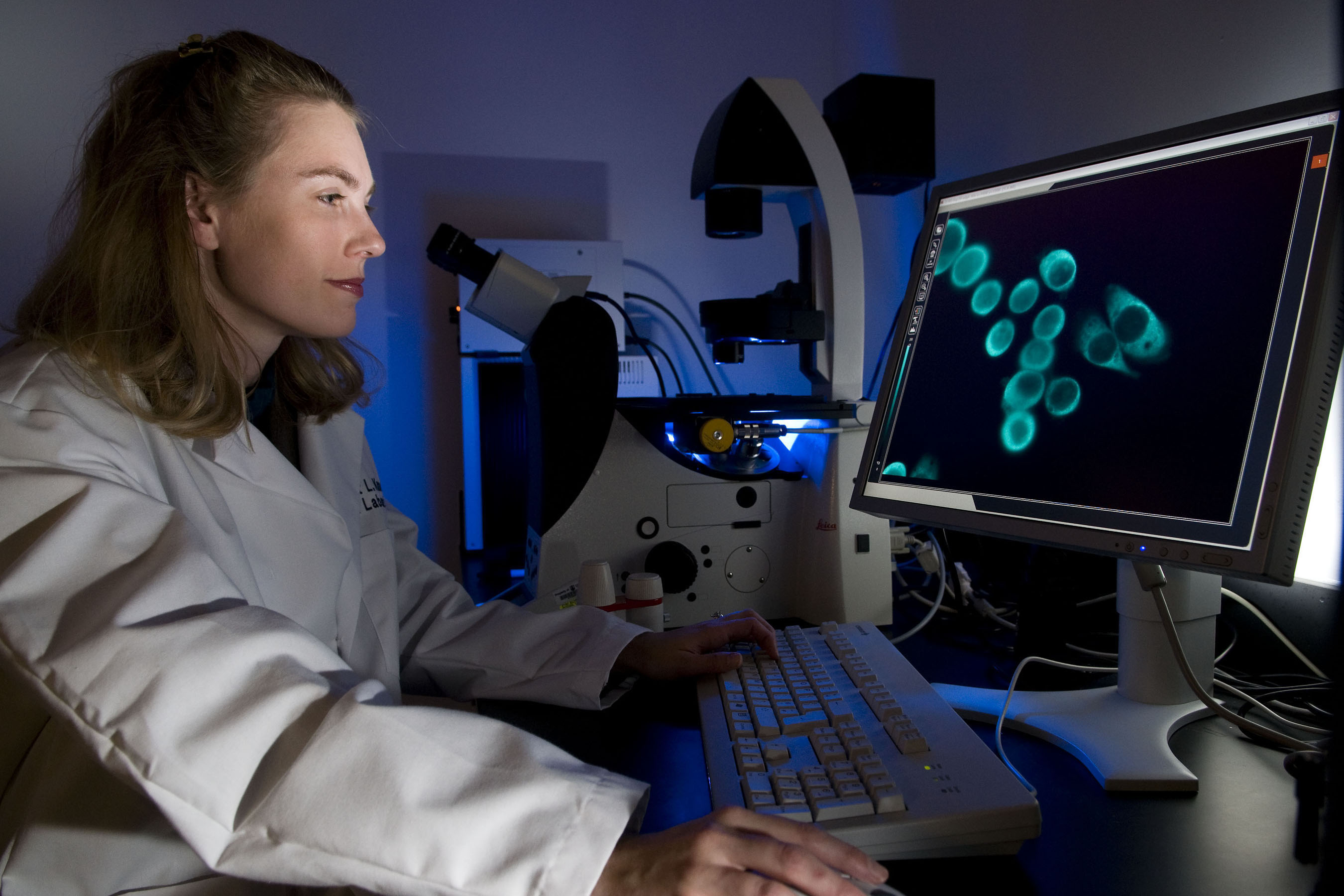Cancer therapy using unique imaging and delivery system is focus of National Science Foundation CAREER Award

Preliminary research on cancer treatments using nanotechnology and laser therapy has led to a National Science Foundation (NSF) Faculty Early Career Development (CAREER) award for Marissa Nichole Rylander, Virginia Tech assistant professor jointly appointed in the Department of Mechanical Engineering and Virginia Tech – Wake Forest University School of Biomedical Engineering and Sciences.
The CAREER grant will allow Rylander to develop and utilize a novel sensing system she co-invented called the “holey scaffold”.
Her design will characterize the three-dimensional and time dependent motion of a nanoparticle used in a treatment process. It will also illustrate the dynamic, light-activated thermal and chemical response of the tumor to the nanoparticle-mediated laser therapy for varying nanoparticle properties and laser parameters within both in vitro and in vivo tumor systems.
The “holey scaffold” is the first system capable of minimally invasive and non-destructive light sensitive, molecular sensing, and control of biological and transport processes within living organisms. Rylander said the “holey scaffold” can be visualized as a miniature microscope used in conjunction with a living system. The “holey scaffold” is built from tissue scaffolding and is embedded with a network of hollow microchannels. Typically made from biodegradable synthetics or biological materials such as collagen, the scaffold promotes tissue growth.
Some microchannels can be used to perform controlled delivery of biological agents (e.g. nutrients, growth factors, tumor cells, nanoparticles, therapeutic agents). Other microchannels can be used to introduce micron-size fibers for non-destructive, in situ, and real-time imaging of biological processes or therapeutic light delivery.
Rylander, who joined the Virginia Tech faculty in 2006, earned her doctorate in biomedical engineering from the University of Texas at Austin (UT) in 2005 where she remained as a post doctoral fellow jointly appointed in the biomedical engineering department and Institute for Computational Engineering and Sciences.
Her CAREER award, in part, is a continuation of work at UT on characterization of injury and heat shock protein (HSP) expression in prostate cancer cells and tumors in response to elevated temperatures associated with water bath and laser heating. Knowledge of the HSP expression distribution in tumors allows the identification of tumor regions with a high likelihood of survival and recurrence. Therefore, therapeutic procedures can be modified to optimize HSP expression to enhance treatment outcome.
Based on these experimental measurements she developed novel computational treatment planning models to predict the temperature, HSP expression, and injury at the cellular and tissue level in response to laser therapy. Rylander’s goal with her $400,000 CAREER award, she says is to ultimately develop more effective and selective laser cancer therapies by incorporating novel nanoparticles to enhance laser based thermal and chemical treatments.
With her “holey scaffold” design, she will be able to measure dynamic nanoparticle mass transport, temperature, cell viability, HSP expression, and reactive oxygen species (ROS) production in real-time within an in vitro tumor in a bioreactor or an in vivo tumor within a mouse. She will use a variety of nanoparticles including carbon nanotubes, novel embodiments of carbon nanotubes and fullerenes, and carbon nanohorns in combination with laser irradiation.
By analyzing the tumor’s response to varying nanoparticle types, delivery methods, and laser parameters, Rylander says she expects to be able to create a multi-component, treatment planning computational model for nanoparticle-medicated laser therapy that can be used by clinicians to determine appropriate nanoparticle properties and laser parameters to achieve selective and effective cancer treatment.
Her CAREER award will also allow her to create a course on nanotherapeutics for undergraduates and graduate students. It will explore the basics of nanoparticles, the experimental measurement of nanoparticle interactions with biological tissues, photothermal, and photochemical mechanisms of nanotherapy. The course will also address the computer modeling of cellular and tissue responses to nanoparticles.
This CAREER project will also establish a multi-tier education and outreach plan that will integrate research elements and discoveries into multidisciplinary educational and research experiences for high school students and teachers from underprivileged schools in West Virginia and undergraduates and graduate students at Virginia Tech.
“It is my long-term career goal to be able to develop effective and selective cancer therapies based on nanotechnology that can be readily implemented as a viable treatment option for millions of cancer patients,” Rylander said.




